Archive
Chemould
- Chemould
Chemould Moulding Manufacturing Co Pvt Ltd., Chemould Frames, Chemould Gallery
- GalleryFrame Shop
Chemould’s history stretches from its beginnings as a manufacturer of chemical mouldings and frames in 1941 over to a hub for art circulation displaying a variety of artists in Bombay.
Word Count: 30
Sepulchre Brothers’ Office, Haroon House, Bazar Gate Street, behind Reserve Bank Building, Fort (now 23A, Haroon House, 294, Perin Nariman St, Fort, Mumbai) (Informal Frame-Shop until 1946); 271 Princess Street, Marine Lines, Bombay (now Shamaldas Gandhi Marg, Navajeevan Wadi, Lohar Chawl, Kalbadevi, Mumbai) ( Frame shop since 1946); Jehangir Art Gallery, first floor, 161 B, Mahatma Gandhi Road, Kala Ghoda, Fort, Mumbai (Gallery 1963–2007); Chemould Prescott Road, Queens Mansion, 3rd floor, G. Talwatkar Marg, Fort, Mumbai 400001 (Gallery since 2007).
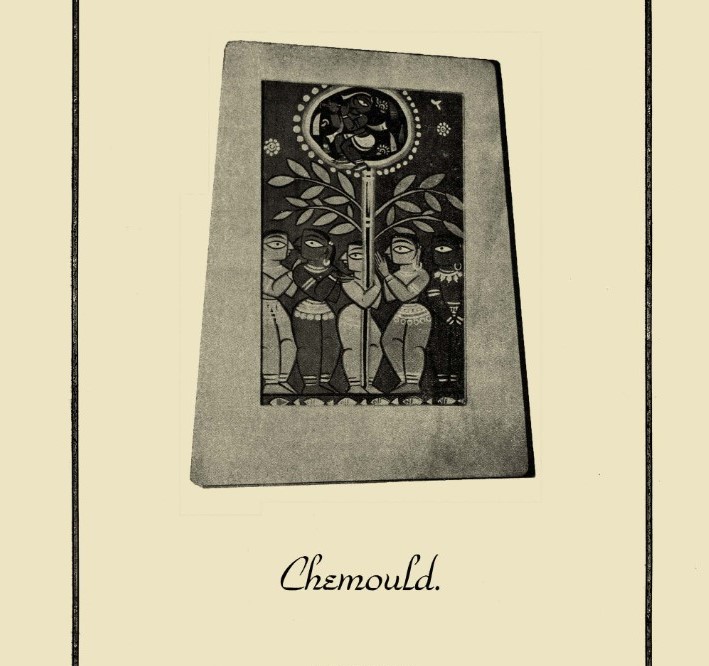
Chemould Frames shop advertising with a painting by Jamini Roy, 1946, detail (Marg, vol. 1, no. 2, January 1947, p. 104; reproduced with the permission of The Marg Foundation, Mumbai, India). 
Chemould Frames shop advertising with a painting by Jamini Roy, 1946. (Marg, vol. 1, no. 2, January 1947, p. 104; reproduced with the permission of The Marg Foundation, Mumbai, India). 
Murals of Italian POW in the St. Francis Church in Dehradun, 2005 (Photo: Margit Franz; All Rights Reserved). 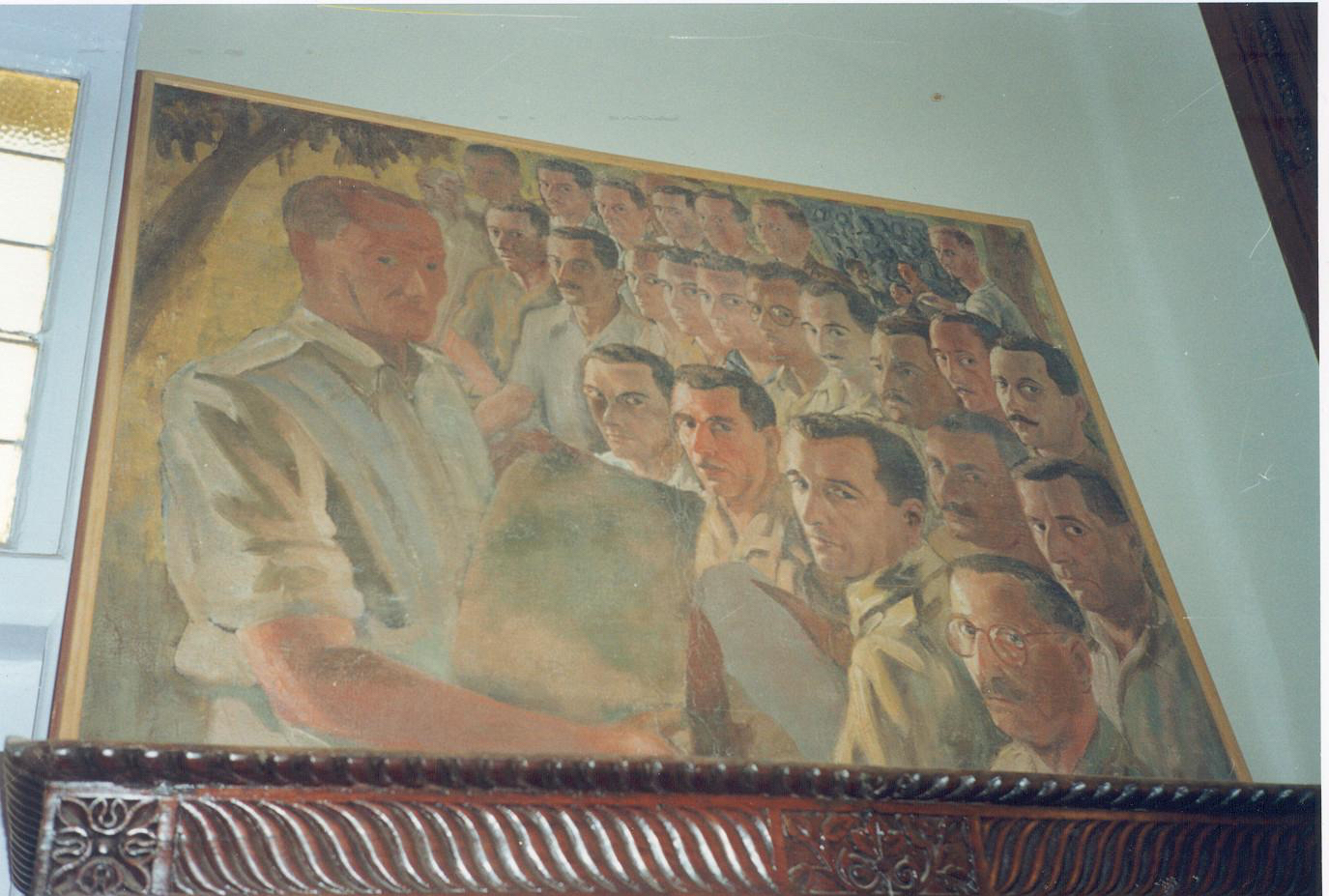
Photo of the portrait of the Italian POW painters engaged in Murart, Kekee Manzil, 2003 (Photo: Margit Franz; All Rights Reserved). 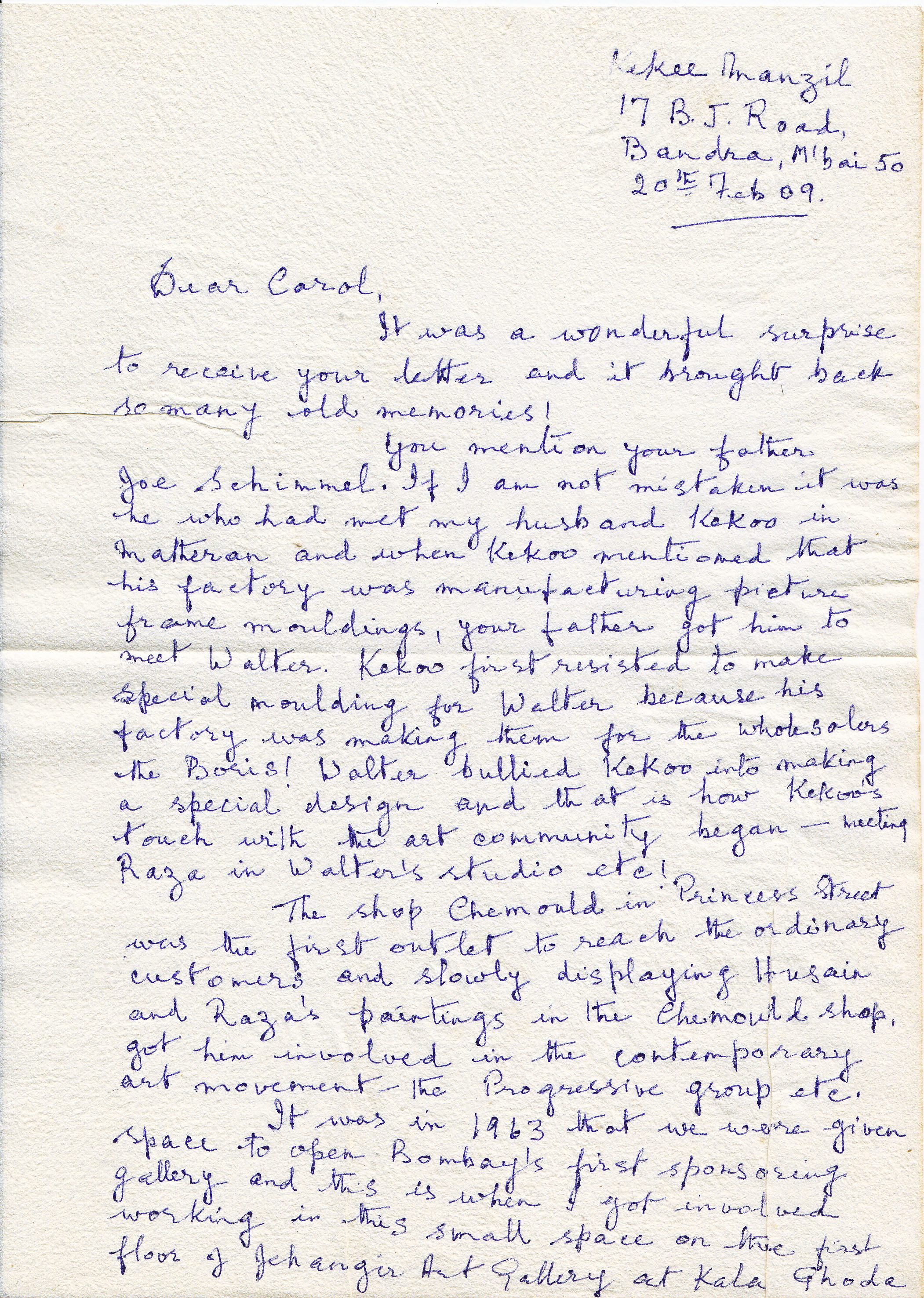
Letter from Khorshed Gandhy to Carol Ross, 20 February 2009 (© Private Archive Joe Schimmel, Cape Town; All Rights Reserved). 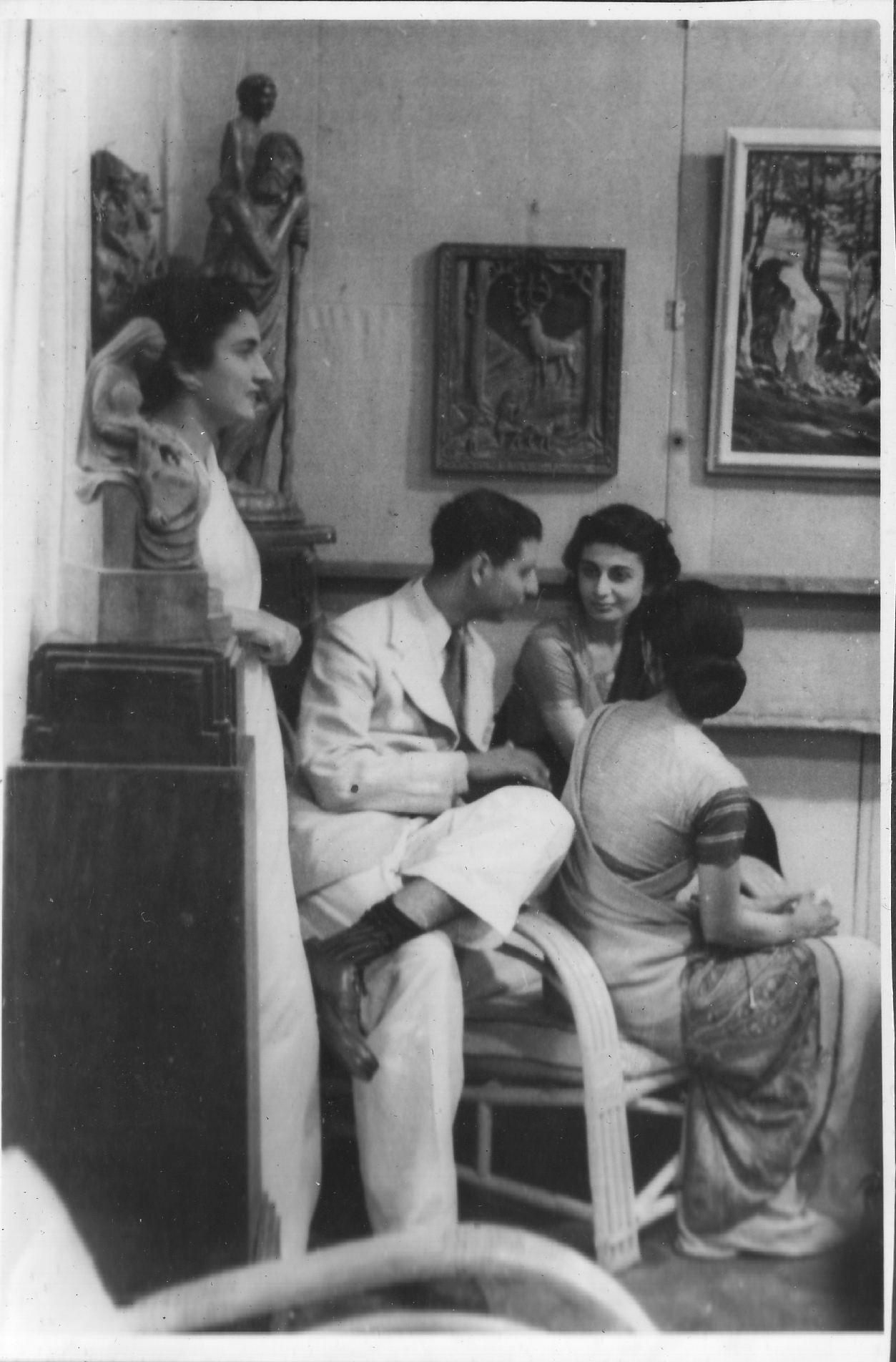
Chemould’s successful couple: level-headed Khorshed (woman standing), networking, enthusiastic Kekoo Gandhy (man sitting, chatting), at Leydens’ exhibition, 1948 (© Private Archive James von Leyden, Lewes; All Rights Reserved). 
A Chemould level on the back of a Chemould art frame (© Private Archive Joe Schimmel, Cape Town; All Rights Reserved). 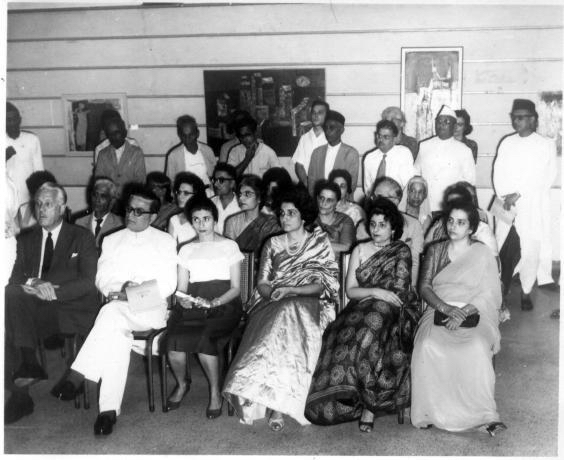
Opening of Chemould Gallery. Khorshed Gandhy (3. right, first row sitting), September 1963 (Digital Photo Archive Margit Franz © Gandhy Archive, Mumbai; All Rights Reserved). Bhatia, Sidharth. “The Accidental Gallerist and the Making of Indian Modern Art.” 8 July 2020, The Wire, thewire.in/the-arts/kekoo-gandhy-art-gallery-bombay. Accessed 4 February 2021.
Dogramaci, Burcu, and Rachel Lee. “Refugee Artists, Architects and Intellectuals Beyond Europe in the 1930s and 1940s: Experiences of Exile in Istanbul and Bombay.” ABE Journal, no. 14−15, 2019, doi: 10.4000/abe.5949. Accessed 4 February 2021.
Ezekiel, Nissim. “Gallery Chemould Inaugurated: Artists Old And New.” The Times of India, 19 September 1963, p. 9.
Gandhy, Kekoo. “The Beginnings of the Art Movement.” City of Dreams, special issue of Seminar, no. 528, August 2003, www.india-seminar.com/2003/528/528%20kekoo%20gandhy.htm. Accessed 21 February 2021.
Ghnady, Keko [Gandhy, Kekoo]. “Picture Frames.” Marg, vol. 1, no. 3, 1947, pp. 90–91.
Hoskote, Ranjit. “Kekoo Gandhy by Ranjit Hoskote. In memoriam: Kekoo Gandhy (2 February 1920–10 November 2012).” 10 November 2012, Out of Print Blog, outofprintmagazine.blogspot.com/2012/11/in-memoriam-kekoo-gandhy-by-ranjit.html. Accessed 24 February 2021.
Pinto, Jerry. The Art Gallery on Princess Street. Illustrated by Gieve Patel, Kripa B, Sudhir Patwardhan. Pratham Books, 2019. Storyweaver, storyweaver.org.in/stories/105518-the-art-gallery-on-princess-street. Accessed 16 June 2021.
Zitzewitz, Karin. The Perfect Frame: Presenting Modern Indian Art. Stories and Photographs from the Collection of Kekoo Gandhy. Chemould Publications and Arts, 2003.
Zitzewitz, Karin. “The Perfect Frame: Presenting Modern Indian Art. Stories and Photographs from the Collection of Kekoo Gandhy.” Christieʼs First Auction in India, exh. cat. Christie’s, Mumbai, 2013, pp. 28–37.
Word Count: 205
Kekoo Gandhy and Indira Chowdhury. Oral History with Kekoo Gandhy, TIFR Archive, Mumbai, 22 November 2006.
Private Archive Margit Franz, Sinabelkirchen: Audio file: Kekoo Gandhy in conversation with Khorshed Gandhy, Rashna Imhasly-Gandhy and son of Roger van Damme. Mumbai, n.d. (kindly provided by Rashna Imhasly-Gandhy; transcript Margit Franz); Archival records from personal interviews between the author and Khorshed and Kekoo Gandhy, Mumbai, 30 April to 3 May 2003; 18 to 22 January 2004; 26 April to 12 May 2007; 13 to 15 October 2008; 24 October 2010.
Private Archive of late Khorshed & Kekoo Gandhy, Mumbai.
Private Archive James von Leyden, Lewes.
The Times of India Archive via Staatsbibliothek zu Berlin: http://erf.sbb.spk-berlin.de/historical-newspapers/ Accessed March 2021.Word Count: 104
- 23-12-1941
Kekoo Gandhy, Khorshed Gandhy, Homi Jehangir Bhabha, Walter Langhammer, S.H. Ara, N.S. Bendre,Shiavax Chavda, Nissim Ekeziel, M.F. Husain, Satish Gujral, Ram Kumar, Krishen Khanna, S.H. Raza.
- Bombay
- Margit Franz; Mareike Schwarz. "Chemould." METROMOD Archive, 2021, https://archive.metromod.net/viewer.p/69/2951/object/5145-7554183, last modified: 14-09-2021.
-
Kekoo Minochair GandhyFrame Shop OwnerGalleristArt CollectorBombay
Starting from a cosmopolitan milieu for young local artists, Kekoo and his wife Khorshed Gandhy developed a business model that turned the frame shop into Gallery Chemould.
Word Count: 27
Marg. A Magazine of Architecture and ArtMagazineBombayLocal and exiled creatives formed the Modern Architectural Research Group to publish a progressive journal of art and architecture in Bombay from 1946 onwards.
Word Count: 23
Iconic Photo of the Progressive Artists’ Group and Their AssociatesPhotographBombayThere are two versions of the PAG photo at the opening of M.F. Husain's first solo exhibition in 1950 (published in 1996 and 2003) and two narratives about the opening.
Word Count: 28
TIFRUniversity / Higher Education Institute / Research InstituteBombayThe TIFR is one of India’s premier scientific institutions. Inside its buildings, scientists ponder over path-breaking ideas. Also, within its hallowed walls is a fine collection of modern Indian art.
Word Count: 31
Jehangir Art GalleryArt GalleryAuditorium HallLibraryBombayEfforts to create spaces for the democratic presentation, discussion and reflection of art in Bombay after independence led to the establishment of the Jehangir Art Gallery in 1952.
Word Count: 27
Homi Jehangir BhabhaScientistCollectorArtistBombayHomi Jehangir Bhabha was a world class scientist, institution builder, an artist and art connoisseur. His vision for growth of science and art has had significant impact in post-colonial India.
Word Count: 30
Bombay Art SocietyAssociationBombayOne of the oldest art societies in India founded by colonial rulers, Bombay Art Society showcased art students and professional artists from all over India, including the Progressive Artists of Bombay.
Word Count: 31
Open Studio Evenings by Käthe and Walter LanghammerSalonBombayThe painter Walter Langhammer and his wife Käthe built an informal infrastructure to promote local avant-garde artists and regularly invited them to Open Studio Evenings at their studio.
Word Count: 29
Schimmel’s Wedding Film 1948FilmBombayThe film shows Schimmel’s Jewish wedding ceremony at the prestigious Glamis Villa, followed by lunch at the Taj Mahal Hotel. Among the guests were Käthe and Walter Langhammer.
Word Count: 30